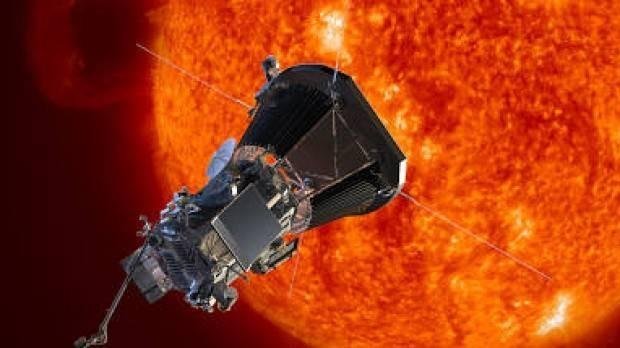Parker Solar Probe, NASA's Rides for Mission to the Sun.

This is definitely an ambitious project, in July next year, the United States Space Agency () will launch their latest ride, Parker Solar Probe. This is a very serious mission: they want to see the sun even closer.
This is the first instrument that will be visited the sun. Previously, since space exploration began six decades ago, humans have sent a variety of nirawak rides to a number of planets and other objects in the solar system.
Even the New Horizons nirawak rides have passed through Pluto and are approaching the tip of the solar system. But until now the sun is more learned from the earth.
It is difficult to send the rides close to the sun because of the high heat and radiation that the star releases. The Hubble Telescope, orbiting 570 kilometers above the earth and used to monitor distant stars, is designed to turn the Sun against protecting its sensitive lenses and instruments.
Later, one of Parker's great travel agendas is solving the puzzle, which is why the sun's atmosphere is much hotter than the star's surface.
So far, experts are still struck by the corona that arises from the photosphere. The temperature of the photosphere, the visible part of the sun's surface from the earth, reaches 6,000 degrees Celsius. While the corona, a white shell that is only visible during a solar eclipse, its temperature can be millions of degrees Celsius hotter than the photosphere.
"Why the corona can be so hot is an old, difficult mystery," said David H. Brooks, a scientist from George Mason University. "The phenomenon is like a fire darting from an iceberg."
Activity of the Sun Magnetic Field
The results of a joint research team from University College London, England, and George Mason University and Naval Research University, USA, in the journal Nature Communications show the magnetic field activity affecting elemental composition, including iron, in the sun's atmosphere. This condition is thought to have a major impact on corona heating.
According to Brooks, during this time astronomers thought the element composition in the sun's atmosphere did not change as did the rotation or the gravity of the star's surface. However, the results show composition changes related to magnetic field activity. "It changes over time and affects atmospheric warming," he says as Science Daily wrote.
The sun's magnetic field fluctuates in an 11-year cycle. In that period, the magnetic field of the sun changed from quiet to intensive. This change is shown by the appearance of a number of sunspots and spikes in radiation levels.
The results of this study are certainly not the final answer, given the observation of the sun is done from the earth. The discussion of the effect of the sun's magnetic field on the corona, according to Brooks, is still a debate among scientists. More detailed answers about coronal anomalies can be obtained if humans can observe the sun even closer. Well, that's why Parker's ride is off.
Mission Solar Parker Probe
Parker Solar Probe is used to study the corona and outdoor atmosphere. Vehicle worth US $ 1.5 billion, or about Rp 20.2 trillion. is also used to collect data structures of the sun, magnetic field, and electricity as well as the phenomenon of solar wind.
The rides are equipped with heat resistant shields made of carbon composite as thick as 11 centimeters. The tin is designed to hold the heat up to 1,400 degrees Celsius which will hit the Parker Solar Probe as it orbits the sun.
With that protector, the rides will operate within the room temperature range. It also protects the rides from radiation with an intensity of 475 times higher than that of humans on earth.
Riding a Delta 4 Heavy rocket, the Parker Solar Probe will bolt into orbit of Mercury, the planet closest to the sun. The vehicle will be at a distance of 6.2 million kilometers, the closest location to the sun to be reached by man-made rides. Parker Solar Probe is designed to do 24 trips around the sun until the mission is completed in 2025.
The journey has not been done yet, but there are old men who are happy about the mission plan. He is Eugene Parker, an American scientist who proved the existence of aloe particle alias solar wind in 1958. This solar wind is capable of triggering damage to electronic equipment on earth.
That is why, this vehicle is named after its name. Parker became the first scientist whose name was used for nirawak rides while still alive. "I feel very honored to be involved in this historic mission," said the 89-year-old scientist as Space writes.
Fantastic Article...This will be nice to..LOOK...back on in the...Future... @timwhotv ...
Thanks..4...Your...Support..I follwed...upvoted...resteemed...& shared with facebook & twitter...thats what i do when i like things... @timwhotv ... "Organic Content"... @organiccontent ...